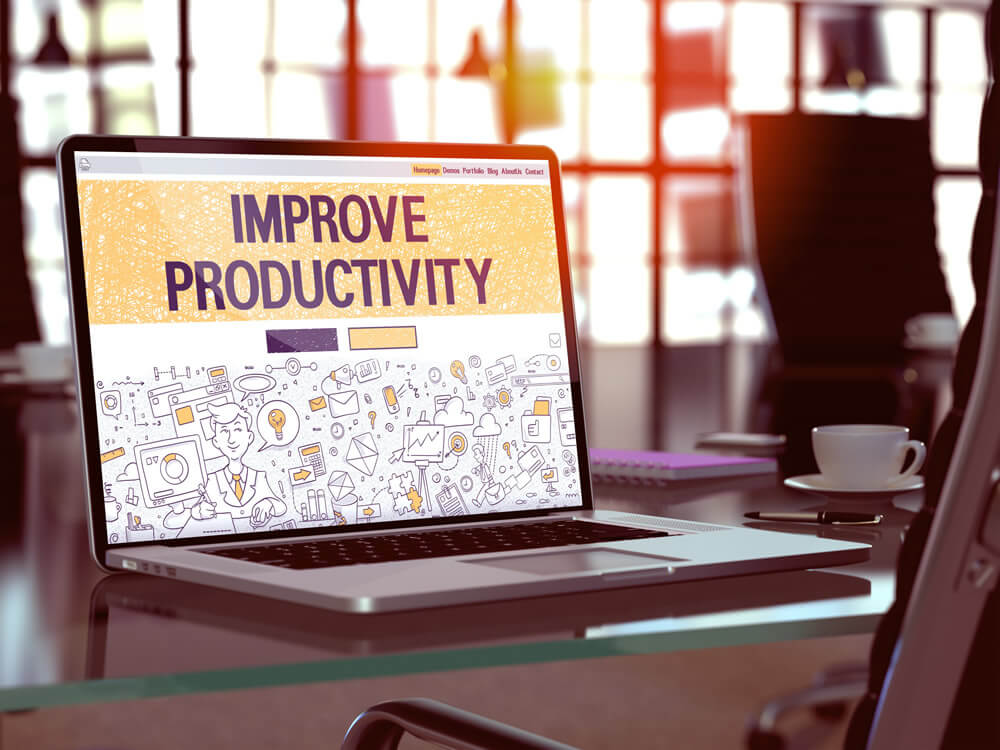Effectively measuring employee productivity is important to create baselines that are necessary to start focusing and driving efficiencies.
Do you think that your employees are productive throughout their day? Think again!
The average worker in an 8 hour day is only focused for 3 hours of this time. The rest of the time is spent talking with co-workers, making phone calls, making hot drinks, checking social media, and more.
If you’re curious about how productive your employees are each day, there’s a way to check. This article will take a look at the different ways to measure employee productivity. Read on to explore these different ways to measure this in order to improve productivity overall.
1. Use Improvement Plans
The average person wastes about 3.07 hours a day on their phone. Even if your workers are working remotely, you can implement monitoring software to see how productive they are throughout their day. This will give you the hard data in order to make decisions when it comes to increasing productivity.
It’ll also allow you to determine loss of focus or when an employee is idle. Workflow overhauls can help to improve not enough time being dedicated to working.
2. Set Clear Expectations
After your workers sign in each day, make sure that they understand the goals set for them and the company overall. Make sure that your expectations are realistic in incorporating time management.
Let your entire team know the goals for the entire organization. Goals need to be measurable and clear for all to understand them.
3. Use the Right Tools
Don’t overboard yourself and your team with too many tools. Instead, use ones that are guaranteed to help.
One example is Calendar. This allows you to automatically schedule meetings.
For project management and staying on the same page, use Basecamp. Slack is a great way to keep communication open with your team and answer any questions.
4. Measuring Outcomes
Instead of measuring input, it’s actually a better idea to measure outcomes. There’s different monitoring software that you can use to achieve this.
Some companies use location analysis and email monitoring to determine this, but this isn’t always the most beneficial option. The best option to combat this is to instead focus on the overall production instead of just how many hours they’re sitting in front of their desk.
5. Manage Tasks
Take a look at your employees and identify their strengths and weaknesses. In order to do this, you can take a look at the available data.
One employee might complete a task much faster than another. In order to improve productivity, it’s a good idea to keep giving that employee the task that they succeed with.
This will also help you determine why some of your employees are performing less than others with certain projects. Your employees might be having trouble with certain tasks, applications, or programs. If this is the case, you can train them to help improve their productivity and skills.
6. Measure Clients
Take a look at your different clients in order to see if they’re reducing the productivity of your employees. If you’re not making much off of that client, it might be worth it to look into whether that client is important for the future.
How To Boost Employee Productivity
One of the best ways to increase overall productivity at your office is to use a time and attendance tracking system. This means less hassle throughout the day. Instead of having to worry about fixing payroll errors, you’ll be able to see overtime, shift start and end times, job rate changes, etc.
Check-In Each Day
Tracking productivity means that you have daily meetings with your team. This is also a great way to take a look at different ideas, concerns, and performances that your team has. It’s also a way to show that you care about how they’re doing.
Ask your employees:
- What can I do to offer support?
- What obstacles are halting faster progress?
- Are we on track toward our goal?
Set Clear Expectations
After your workers sign in each day, make sure that they understand the goals set for them and the company overall. Make sure that your expectations are realistic in incorporating time management.
Let your entire team know the goals for the entire organization. Goals need to be measurable and clear for all to understand them.
Effective Onboarding
Effective employee output has to do with the proper training of new employees. This time will set the stage for how these new employees will view your company.
Make sure that you or another worker plans out enough time for the onboarding process for them to learn. Focus on acceptance and comfort as well for them. When employees are accepted and comfortable in a workplace, they’re more likely to be productive.
This should include a warm welcome as well whether that’s through email or in person. Let them know about details regarding their leaders/colleagues and the different company policies.
All new employees need to also receive the correct resources and gadgets necessary to perform their job well. Make sure that they have the proper desktops or laptops for work starting the first day. Training should encompass days or weeks depending on the position.
Exploring How to Measure Employee Productivity
After exploring this guide, you should have a better idea of the different methods out there to measure employee productivity. Take your time using different methods to measure their productivity in order to increase success.
Would you like to get started with a simple employee time clock for your employees? Get started today with the right plan that fits your needs!

